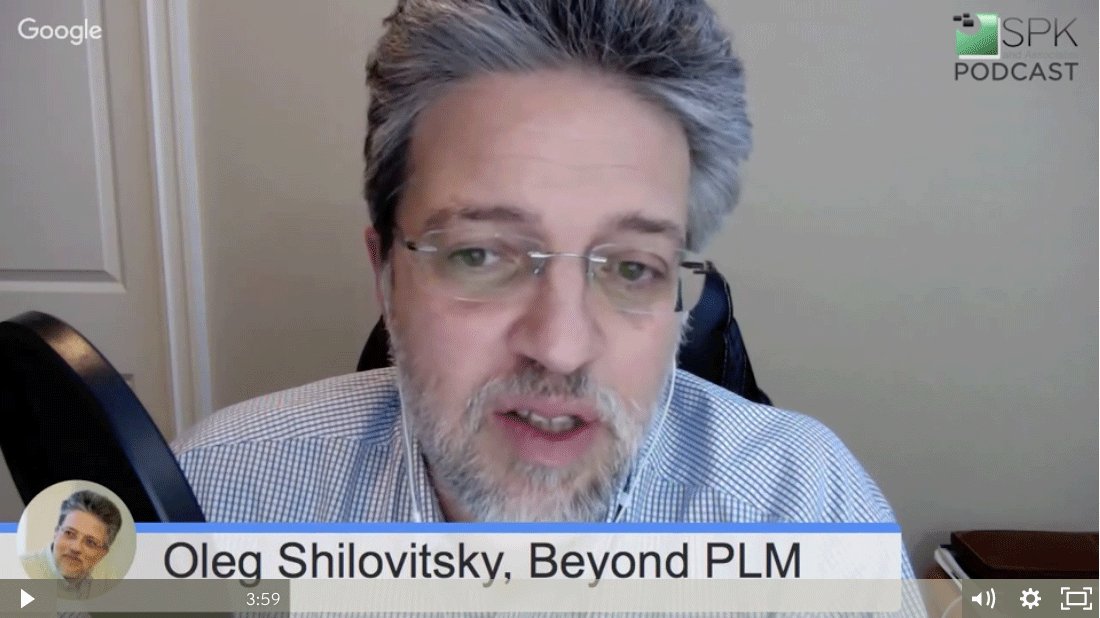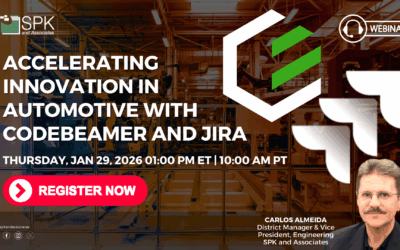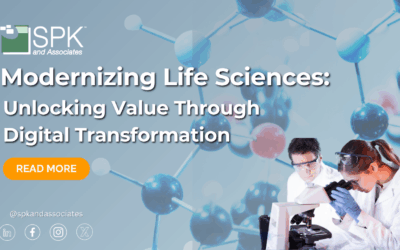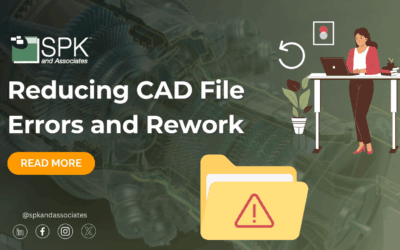Is PLM in the cloud actually delivering new user experiences? According to PLM expert Oleg Shilovitsky that answer is no. He believes PLM companies need to stop marketing cloud technology and start deploying new user experiences in the cloud. SPK and Associates co-founder Chris McHale spoke with Oleg on this topic in a recent podcast.
Transcript
Chris: Hi, this is Chris McHale, co-founder and COO of SPK and Associates, a technology services company dedicated to accelerating product development in manufacturing companies. I’m here with Oleg Shilovitsky, a well-known blogger on product lifecycle management topics for the last five years. Oleg and I are presently producing a podcast once a month where we dive deeper into one of his key topics from his recent blogging posts. So, Oleg, would you take a moment to introduce yourself and your blog?
Oleg: Sure. Hi, Chris. I’m Oleg Shilovitsky. I’m a blogger and consultant for product lifecycle management. I started to blog about five years ago and never stopped. And I’m covering technology and information about product lifecycle management and related topics. So good to be here. Thanks.
Chris: Great. Thanks for joining us again. So, Oleg, you’ve had a few blog posts the last or month so that are related to, first, the user experience with PLM, and then, secondly, PLM and the cloud technology. So you related that cloud has become a pervasive term related to PLM platforms, everybody is talking about it. And using my own words, I would say that every PLM vendor out there is claiming to provide cloud PLM and is attempting to differentiate their platform based on offering this type of technology, although it seems like everybody is at this point, although we’ll talk about the differences in a moment.
Following that, you also had a very interesting blog that talked about the user experience related to PLM, and you commented that, “The challenge for most of the CAD and PLM companies today is to stop marketing technology and shift their focus into the deployment of technologies to support a new type of product and business model.” So in other words stop talking about cloud and PLM since cloud is really just technology, and start delivering a different user experience in PLM using the cloud, sort of a breakthrough experience or something that really changes the field.
So I wanted to spend some time this morning talking with you about this because I was really intrigued. I agree with you and I was intrigued by your comments, and I was starting to think myself, “Well, what is that new user experience that one could provide in PLM using the cloud?” But first let’s…if you could actually just talk a little bit about what is cloud. When people say cloud, PLM in the cloud, what are they talking about and what are some of the differences, just to educate our listeners for a moment?
Oleg: Sure. I think that’s a great topic and I agree. Cloud became mostly a buzz word that means practically nothing to people that are trying to figure out what is the product and technology does. So it’s used widely by people and companies, and as a result of this, users are confused. So what we have now in PLM domain is that all vendors are practically saying that we can support cloud in different marketing terms and different words, but the meaning of each, the practical result is different. From that same point, today I would clearly differentiate between two groups of cloud solutions.
One of them is so-called hosted solutions. What it means in practical sense is that technologies allows to host existing PLM platform in one of the available hosting facilities. Now, hosting facilities can be physical machines hosted by some vendor and it could be Elastic Cloud Amazon Web Services are hosted. But again, from that standpoint it doesn’t matter where your server is located in somewhere in Boston, Massachusetts or Amazon Elastic Cloud in the Amazon Web Services. It doesn’t matter. This is the servers that are working for a particular company and hosted for a particular company. So this is one group, and it hosts existing platforms and existing products.
Now, the second group is so-called SaaS, and sometimes people apply multi-tenant word to this definition, but this is SaaS applications. So these are applications that are, from the beginning, intentionally developed to run in the cloud environment which is the Software as a Service. They are only available from this SaaS environment, and this is the only experience that they provide. They run in a browser. They run the particular cloud infrastructure. It could be Amazon, it could be anything else, but these applications are tuned for cloud. We could more and deep to discuss different technological aspects, but these are applications that cannot be deployed on premise.
So these two groups, practically today, if you speak on all PLM vendors you can identify clearly who is doing what. And a couple of days ago, I published the update for my PLM vendor cloud service comparison, where I outlined what is supported by what vendor, and it’s still a work in progress. I’m talking to people getting updates, but this is pretty clear definition of who’s from vendor, doing SaaS and who is doing hosting.
Chris: Okay, great. That’s really helpful actually because I think there is a lot of confusion still about what it all means. But now that you’ve given us an overview of the technology, let’s get to the good stuff. Do you see any changes in the PLM user experience, we’ll call it that, yet with these cloud technology changes? And I’m sure the answer to that is going to be slightly different based on the PLM provider or the PLM vendor, but if we could just go to the 30,000-foot level for a moment, are we seeing any changes? Or is it just the same old thing but delivered with a different…in a different method?
Oleg: Yeah, experience is not a tricky word because everyone loves that now and since Apple started to talk about experience you can see it exploded and we have different experience, we have 3D experience, and we have user experience. We have different kind of experiences. So I think the good news here is that all vendors are in the acknowledgment of the importance of the experience so you hardly can find somebody who is saying, “I want to develop ugly enterprise products like 20 years ago.” So you can’t find that.
On the other side, if you’re speaking about hosting in many situations it’s the same products. So from that standpoint cloud or not cloud it doesn’t really matter because it’s the same product coming in a different environment if you think about usage. But experience is a word which is not only about how users log into the system and use it, but it’s also about how you install the system, how you can implement system, how you’re getting support, maintenance. So from that standpoint cloud, even if it’s hosted, can provide a different level of experience because you don’t need to do provisionary of hardware, you don’t need to do many administrative tasks, you don’t need to do updates or upgrades to the system. So it’s all inclusive in experience for it.
So if you have your PLM system runs, hosted from the cloud, and somebody, as a vendor or third-party service company, is supporting this environment you’ll have a little bit different experience. So that’s where I think experience is also not very specific. What does it mean? It goes from how you start using the system and actually come into the particular ways of the user interface and anything else.
Chris: So, so far what you’ve described though, seems like it’s a change in the user experience from the experience of the people who are administering the system or administering the environment rather than the actual engineers, the purchasing people, or the various people that are actually using PLM for the purposes of doing their business, so to speak. I know there are some…we have a couple of PLM providers like Arena, as one example, that started out as a real SaaS, or true, rather, SaaS critical “multi-tenant” PLM system, and there’s a user experience associated with that. And then the other vendors that are the more traditional on-premise vendors, they’ve been also offering a cloud, maybe more of an infrastructure, or a platform as a service model.
Do you see a difference between, say, what the true cloud Arena vendor is providing versus the other more traditional ones? Is there that much of a difference? Or is it just more all that that we see so far is less administrative hassle, easier to upgrade, not as much day-to-day work on the part of the company to keep the environment up and running? What is it?
Oleg: This is actually a great question because, first of all, I don’t like the definition of true cloud because nobody knows what is true. So I think, first and foremost, it doesn’t matter if it’s SaaS or hosted. Cloud PLM removes the need to install and simplify the administration and maintenance of systems. So I think this is the achievement of cloud PLM for the last three to four years, three to five years that we have. And clearly, Arena, you mentioned Arena, Autodesk PLM 360, these are two examples of SaaS cloud applications. Everyone else is hosted in different ways, like it could be public cloud, it could be private cloud, but it’s hosted in different ways.
Now, it doesn’t matter what you have hosted or SaaS, you will have simplification of IT and you will have a different cost structure for PLM systems, so it will be a subscription. It will eliminate the need to support infrastructure to run updates and do all administration tasks. And as a user experience and the user interface concern, all the systems can be compared the same way because it doesn’t matter if it’s a SaaS application which runs only in the cloud or it’s hosted and you can run it on-premises on the cloud. You just take a look on this application if it runs the way you want and if you like, so it’s a good experience. Otherwise you don’t like it. There is another aspect which is not exposed to end users is cost to run different cloud PLM applications if it’s hosted or multi-tenant. But this is probably a topic for a different conversation.
Chris: Right. So just a last comment or question then to summarize what you’re saying there, and this was an important point that you just made, I think, is that with some of these “true SaaS” multi-tenant, shall we call it that, applications, PLM applications, what you’re implying there is that there is some limitation as to what you can do with the environment to accommodate your own maybe specific processes in a company. Whereas with a private cloud environment, or obviously an on-premise environment, you can go to town if you wish to configure or customize it to match whatever your process desires are.
I wonder if in moving towards a more multi-tenant SaaS PLM application, if the companies would start to say, “Well, I’ll accommodate my processes to me, or to match, so to speak, what this environment will provide kind of out of the box,” or if there’s just going to be a point where they won’t do that so there’ll be a limit as to what that multi-tenant application can actually provide? And that’s kind of a complicated question, I don’t know if I worded it quite right. But I’m just wondering if you have any thoughts on that or that’s kind of getting what the user experience is with this cloud technology, but wondered if you had any thoughts on that.
Oleg: Yeah, this is an important question and an important moment to understand. The perception that if you have a multi-tenant SaaS application is that you have less option to configure or customize and that you have a hard time to integrate it, which I certainly disagree because it could be a case for both, for multi-tenant SaaS and also for hosted. It’s very dependent on the product, and they do in details here so you need to speak about particular systems. And we have examples of multi-tenant SaaS applications that can be very flexible and configurable, and we have examples of hosted existing PLM platforms that are not configurable when it comes to the cloud. So I think you just need to take it down to particular use cases and see what system can do and how you can configure this and how you can customize it. So it’s probably another good conversation to have.
Chris: Okay. Well, thanks, Oleg, so much for joining us and for sharing your thoughts and your experience on these topics, and we look forward to the next time.
Oleg: Thank you, Chris. Great questions, and look forward to the next time.







